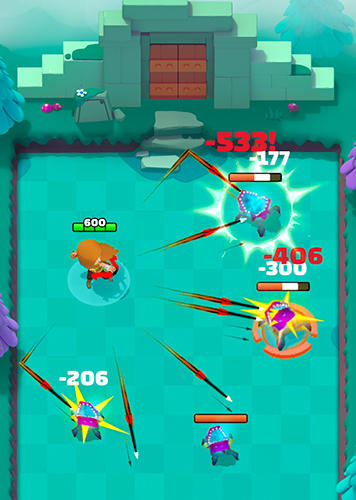

If you manage to get through, you unlock a new stage with new enemies and skills and the grind begins again. You can die once and purchase a revival, and that’s it. Each dungeon has in most cases 50 levels, and one would need to complete all levels to finish the dungeon. It is a roguelike game consisting of a chain of dungeons. If we had to highlight only one thing about Archero, it’s definitely the fact of how incredibly playable it is. And the answer to what makes Archero such a well designed game to justify its audience targeting strategies lies in the core game design.Ĭore Game: A Happy Affair between Luck & Skill But, marketing and UA strategies only live on top of a well designed product. Without a doubt, these three puzzle pieces have played a solid role in the $25m+ success that Archero is seeing today. It is also quite interesting to see some of the more recent UA videos in Japan really hitting these ARPG elements. As our friend Anil would say, “Archero is the diet coke version of Diablo”, and one can see the game making sense to play for more core audiences too.

Further, and only speculating here, key countries from the East like South Korea, Japan and Taiwan have contributed to half of Archero’s lifetime revenues and these are also countries where ARPGs are very successful.

This too can be see in additional keywords the game uses, like “arpg” and “rogue”. The second bird - it is using its more ARPG-esque gameplay elements to target more core audiences. The latter is captured quite well in Archero’s launch week install curve shape. This is the first piece of the puzzle - a founding team that is skilled in the art of designing highly addictive Hyper-casual core game experiences, while having the expert know-how of quickly validating marketability and scaling rapidly once globally launched. Based on their work descriptions at Cheetah, it is also clear that this team has worked together on some of Cheetah’s very successful Hyper-casual titles - primarily on the product and UA side of things. Going through the profiles of these employees, the identifiable core founding team all left top Hyper-casual game publisher, Cheetah Mobile Beijing, in close proximity of each other to found Habby. The “stalking network for business professionals” also mentions a total of 12 employees in the company, and here is where things start to get interesting. The uncertainty stems from the company being registered in Singapore, but their employees having marked Beijing, China as their current work location on LinkedIn. Starting with the basics - the company is based out of Singapore and/or Beijing, China.


 0 kommentar(er)
0 kommentar(er)
